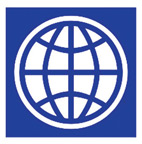World Bank to increase lending to help end poverty
Washington: World Bank Group President Jim Yong Kim today declared a
series of measures aimed at strengthening the World Bank Group to better
meet the evolving needs of clients, including a $100 billion increase in
the lending capacity of the Bank's lending arm for middle-income
countries over the next decade, innovations in financial management, and
a boost in the institution's ability to provide private sector support.
 This follows the record $52 billion replenishment of IDA, the World
Bank's fund for the poorest, in December 2013. Speaking at the Council
on Foreign Relations (CFR) in Washington in advance of the World Bank
and IMF Spring Meetings, Kim outlined how the Bank is positioning itself
to better achieve its goals of ending extreme poverty by 2030 and
boosting shared prosperity for the lowest 40 percent in developing
countries. This follows the record $52 billion replenishment of IDA, the World
Bank's fund for the poorest, in December 2013. Speaking at the Council
on Foreign Relations (CFR) in Washington in advance of the World Bank
and IMF Spring Meetings, Kim outlined how the Bank is positioning itself
to better achieve its goals of ending extreme poverty by 2030 and
boosting shared prosperity for the lowest 40 percent in developing
countries.
"We now have the capacity to nearly double our annual lending to
middle-income countries from $15 billion to $26 to $28 billion a year.
This means that the World Bank's lending capacity will increase by $100
billion to roughly $300 billion over the next ten years," said Kim.
"This is in addition to the largest IDA replenishment in history,
with $52 billion in grants and concessional loans to support the poorest
countries," he said.
In addition to the previously declared $400 million in cost savings
over the next three years that can be reinvested, Kim described a series
of measures at the International Bank for Reconstruction and Development
(IBRD) - which provides financing, risk management products and other
financial services to middle-income countries - that have the potential
to transform IBRD by substantially increasing its ability to serve its
clients.
These include: increasing IBRD's Single Borrower Limit by $2.5
billion for Brazil, China, Indonesia, India, and Mexico, with a 50 basis
point surcharge on the incremental amount, revising IBRD's minimum
equity-to-loan ratio to reflect improvements in portfolio credit risk,
enabling more efficient use of shareholder capital while remaining
financially prudent, changing IBRD's loans terms, including restoring
the 25 basis point commitment fee charged on undisbursed balances and
offering longer maturities with increased maturity differentiation.
This will allow IBRD's annual lending commitment capacity to expand
immediately from the current $15 billion in annual lending to more than
$25 billion per year.
Therefore, the Bank's clients over the next 10 years can see IBRD's
capacity, in terms of the maximum loan book it can prudently support,
increase from about $200 billion to nearly $300 billion, which would
also boost the Bank's countercyclical crisis-response capacity.
With an infrastructure financing gap currently estimated at $1.2-1.5
trillion per year in emerging market and developing economies,
additional resources that remain attractive relative to bond markets
should continue to be in demand.
Kim also described how separate arms of the World Bank Group are
working even more closely to achieve greater efficiencies. For example,
the Bank Group's political risk insurance arm, the Multilateral
Investment Guarantee Agency (MIGA) is entering into an innovative MIGA
and IBRD exposure exchange agreement to improve the diversification of
each organisation's portfolios, thereby freeing up capacity to support
additional business.
The first exchange will be of an IBRD exposure to Brazil for a MIGA
exposure to Panama, under a MIGA contract for non-honoring of sovereign
financial obligations. Panama and Brazil will see benefits, as IBRD and
MIGA will have more headroom to do additional business in each country.
Kim also said that MIGA plans to increase its new guarantee extension
by nearly 50 percent over the next four years.
He described how IFC will enhance its support in achieving the global
lender's twin goals, with an expectation that it will close to double
its financing over the next decade. "IFC, the largest provider of
multilateral financing for the private sector in developing countries,
expects to nearly double its portfolio over the next decade to $90
billion.
In 10 years, we believe its annual new commitments will increase to
$26 billion," said Kim.
The World Bank Group has seen its financial support to developing
countries double over the past ten years, from $25.8 billion in FY04 to
$52.6 billion in the last fiscal year.
The cumulative effect of the additional lending capacity at IBRD, the
largest-ever IDA envelope and growing business at IFC and MIGA will be
significant, he said.
"The World Bank Group's annual commitment, which today is around $45
to $50 billion, is expected to grow to more than $70 billion in the
coming years," Kim said.
"This increased financial fire power represents unprecedented growth
for the World Bank Group. We are now in a position to mobilise and
leverage, in total, hundreds of billions of dollars annually in the
years ahead," he said. |

